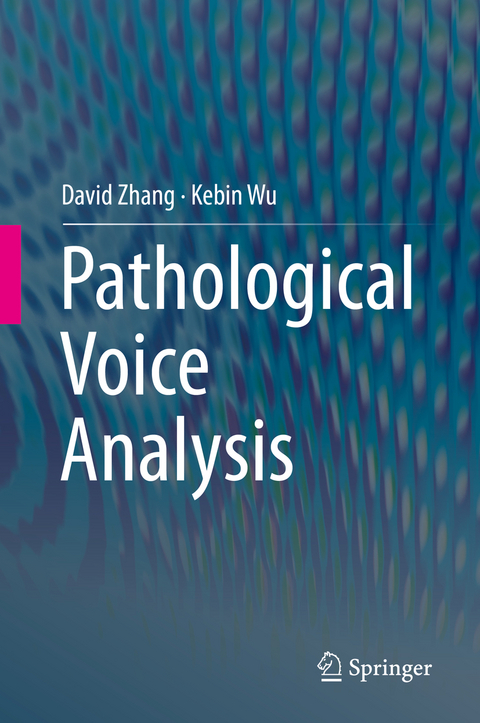
Pathological Voice Analysis
Springer Verlag, Singapore
978-981-329-195-9 (ISBN)
Firstly, it reviews the field to highlight the biomedical value of voice. It then offers a comprehensive overview of the workflow and aspects of pathological voice analysis, including voice acquisition systems, voice pitch estimation methods, glottal closure instant detection, feature extraction and learning, and the multi-audio fusion approaches. Lastly, it discusses the experimental results that have shown the superiority of these techniques.
This book is useful to researchers, professionals and postgraduate students working in fields such as speech signal processing, pattern recognition, and biomedical engineering. It is also a valuable resource for those involved in interdisciplinary research.
David Zhang graduated in Computer Science from Peking University. He received his MSc and PhD in Computer Science from the Harbin Institute of Technology (HIT), in 1982 and 1985 respectively. From 1986 to 1988 he was a Postdoctoral Fellow at Tsinghua University and then an Associate Professor at the Academia Sinica, Beijing. In 1994 he received his second PhD in Electrical and Computer Engineering from the University of Waterloo, Ontario, Canada. Currently, he is with the School of Science and Engineering, The Chinese University of Hong Kong (Shenzhen), China. He also serves as Visiting Chair Professor at Tsinghua University and HIT, and Adjunct Professor at Jiao Tong University, Peking University, the National University of Defense Technology and the University of Waterloo. He is the founder and editor-in-chief of the International Journal of Image and Graphics (IJIG); book editor for the Springer International Series on Biometrics (KISB); organizer of the first International Conference on Biometrics Authentication (ICBA); and associate editor of more than ten international journals, including IEEE Transactions. He has published over 20 monographs, 400 international journal papers and 40 patents in the USA/Japan/HK/China. He was listed as a Highly Cited Researcher in Engineering by Clarivate Analytics (formerly known as Thomson Reuters) in 2014, 2015, 2016, 2017 and 2018. Professor Zhang is a Croucher Senior Research Fellow, Distinguished Speaker of the IEEE Computer Society, and a Fellow of both IEEE and IAPR. Kebin Wu received her B.S. degree in Electronic and Information Engineering from the Harbin Institute of Technology in 2011 and her Ph.D. degree from Tsinghua University in 2018. Her research interests include pathological voice analysis, computer vision and statistical pattern recognition.
CHAPTER 1 INTRODUCTION.- CHAPTER 2 PATHOLOGICAL VOICE ACQUISITION.- CHAPTER 3 PITCH ESTIMATION.- CHAPTER 4 GLOTTAL CLOSURE INSTANTS DETECTION.- CHAPTER 5 FEATURE LEARNING.- CHAPTER 6 JOINT LEARNING FOR VOICE BASED DISEASE DETECTION.- CHAPTER 7 ROBUST MULTI VIEW DISCRIMINATIVE LEARNING FOR VOICE BASED DISEASE DETECTION.- CHAPTER 8 BOOK REVIEW AND FUTURE WORK.
| Erscheinungsdatum | 07.08.2020 |
|---|---|
| Zusatzinfo | 41 Illustrations, color; 3 Illustrations, black and white; X, 174 p. 44 illus., 41 illus. in color. |
| Verlagsort | Singapore |
| Sprache | englisch |
| Maße | 155 x 235 mm |
| Themenwelt | Informatik ► Theorie / Studium ► Künstliche Intelligenz / Robotik |
| Medizin / Pharmazie ► Physiotherapie / Ergotherapie ► Orthopädie | |
| Technik ► Medizintechnik | |
| ISBN-10 | 981-329-195-8 / 9813291958 |
| ISBN-13 | 978-981-329-195-9 / 9789813291959 |
| Zustand | Neuware |
| Informationen gemäß Produktsicherheitsverordnung (GPSR) | |
| Haben Sie eine Frage zum Produkt? |
aus dem Bereich


